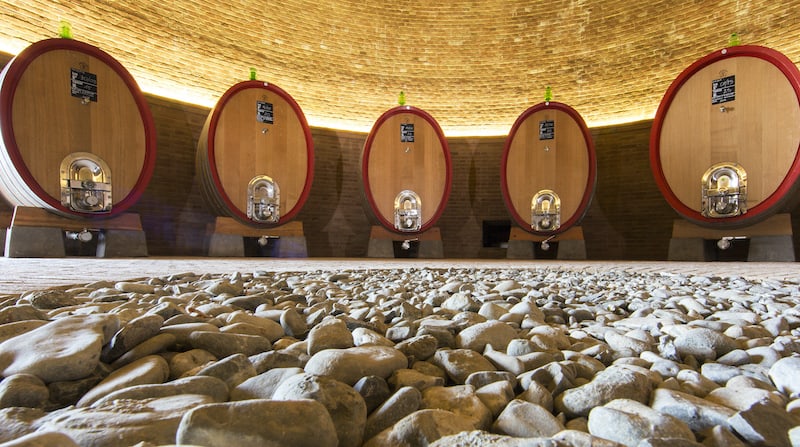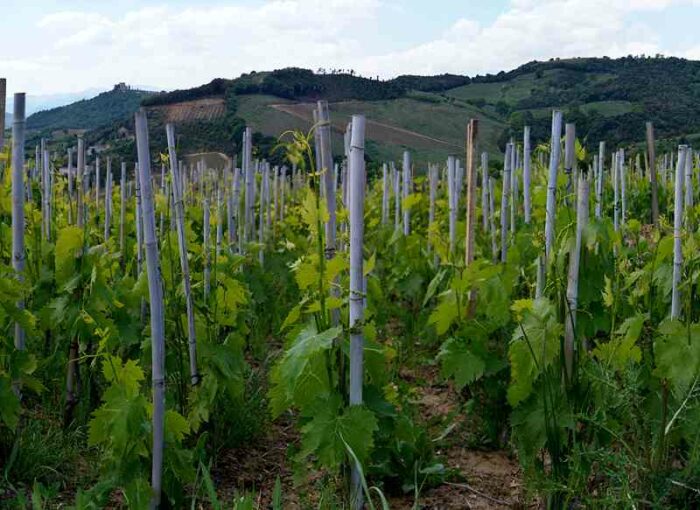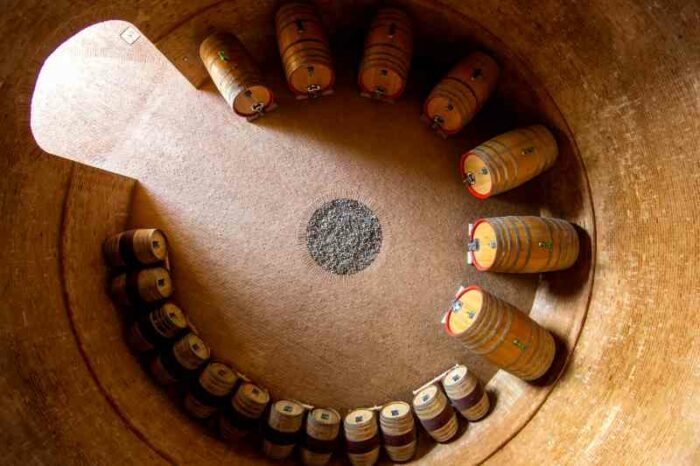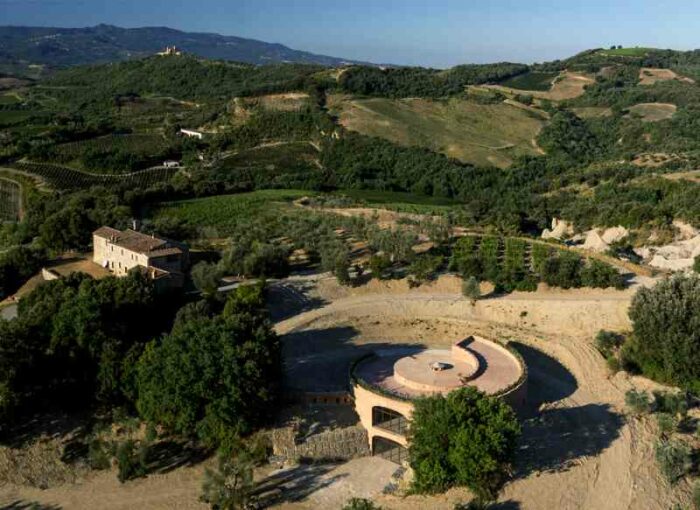Book your visit
17/07/2017

A third-generation member of the Illy family (of the famous Illycaffè empire) invented the ‘dense’ vineyard—and now produces some of the most highly-coveted wine in Tuscany.
Francesco Illy is accomplished, just like the rest of his family. He is part of the third generation of Illys responsible for building a coffee empire started by his grandfather – the original Francesco Illy – in 1933. In 1935, the first Francesco patented the espresso. In the sixties, his son Ernesto invented electronic selection, a system used in all the world’s coffee-growing countries to eliminate defective cherries. In the 1980s, Ernesto’s son Riccardo reinvented illy’s 250g ground coffee tin. And in the 1990s, Ernesto’s brother Francesco (of the third generation) created the first colorful designer home-use espresso machine. Each member of the family has made his or her mark on the company. But for Francesco Illy of present-day, his work outside the family business may be his most significant. After all, he has created the densest vineyard in the world. Thankfully, private vineyard tours and wine tastings mean you can experience it all for yourself.
The World’s Densest Vineyard
Each of Podere le Ripi’s four wines has its own vineyard, soil, density, and quality. Bonsai, a deep ruby red Rosso Di Montalcino, is the most expensive, and it is named as such because of the extreme proximity of its vines. It is the product of a revolutionary technique invented by Illy himself.
In 1997, after a 10-year search, Illy finally bought a home on 55 hectares of land in Montalcino, a Tuscan hill town known for its Brunello wine. The land, known as Podere le Ripi, was flipped to Illy from a selling shepherd, and its soil was completely free of grape vines. Illy was a wine consumer and, prior to moving there, a customer of several wine producers in Montalcino. But he was no winemaker and at first, making wine was not even his intention.
After two years of living on his vast estate with enough room to do about whatever he pleased, he decided he wanted to make his own wine. He started to study and he fell in love with wine production. Winemakers told Illy he would have no luck making a great wine with vines younger than 35 years old. In a business that many are born into, passed down across generation after generation, Francesco Illy was trying to break into the industry at 50 years old. By popular logic, Illy would be able to take his first sip of his own wine around age 90. No, thank you, he said.
Described by his young oenologist Sebastian Nasello as a dreamer and a visionary, Illy decided he needed to expedite the winemaking process, even if it required doing something ridiculous. Between 2000-2010, Illy and his team planted all the vines that would eventually make his Podere le Ripi wine. “The idea was to oblige the vines to come very quickly and very deep with the roots in the soil in order to make a better wine,” Illy says, describing what is now known as the “bonsai technique,” which had technicians, oenologists, and everyone else in the wine business telling him he was crazy.
In Illy’s technique, vines are planted only one foot, four inches apart. Depending whom you ask, standard vine spacing starts around five feet and generally leaves enough room for a tractor to navigate the rows. At Podere le Ripi? “It’s extremely dense. You have difficulty walking inside that vineyard.”

Not only is Bonsai dense, it is the densest vineyard in the world, a fact Illy is proud of considering how absurd his ideas seemed to some, and how they worked out. “By having density, we can increase the competition between the vines. Because they are close and they can’t grow in the top of the surface, they have to dig,” Nasello explains.
Another advantage of Illy’s deep-rooted vines is the ability to maintain humidity. Where surface-level roots are prone to going dry with lack of humid weather, roots that penetrate three meters deep are able to find water even during a dry spell.
Illy recalls, “Everybody said I was crazy and I said, ‘I don’t care. I’ll try, I’ll see what happens.’ When you put them so narrow, one to the other, either they go down with the roots or they die. And they went down. This has been working very well.”
Ellen Rothschild is part owner of a paperless office company based out of New York and Massachusetts. Her family became hooked on wine tours during a 2016 trip to Argentina and Chile. Rothschild and her daughter both gravitate toward Italian wines, while she admits her husband prefers French wines. Staying at Arianna villa in Tuscany’s Chianti Area in June 2017, her personal vacation concierge set her and her family up with a first-time visit to Podere le Ripi. She describes the vineyard as having “a view that you just can’t beat,” and one that she can recreate every time she sips one of Illy’s wines.
The Harmonious Cellar
Podere le Ripi sits next door to Mastrojanni, a historic Brunello estate more than two decades old. (The Illy family would go on to buy the estate in 2008.) In 1997, when Illy moved in, the family had never produced wine, but they had six decades of beverage experience behind them. The original Francesco Illy, grandfather of this Francesco Illy, in 1933 founded the world-renown Italian coffee roasting company Illy, specializing in espresso.
The family-owned holding company Gruppo illy SpA would later use a series of acquisitions to extend its branches: along with coffee, they sell jams and marron glacé, or candied chestnuts (Agrimontana, December 2005); chocolate (Domori, 2006); and tea (Dammann Frères, 2007). The group’s venture into wine, led by Francesco’s younger brother Riccardo, of Mastrojanni in September 2008 meant each Illy generation had introduced a beverage to the company. Years earlier though, Francesco had already personally begun to experiment with wine. To this day, he is the sole owner of Podere le Ripi and his family has little to do with it.
One Illy did make an incredibly important contribution to the vineyard: architect Ernesto Illy, Francesco’s son, led the project to build Podere le Ripi’s Golden Cellar. In 2003, at only 20 years old, Ernesto designed the first sketches for what would be a 12-year project from start to finish, and resulted in a 750,000-brick, Roman-inspired cathedral of a cellar.
Ernesto’s cellar was built using the Golden Cut, an ancient geometric relationship that inspired the Parthenon’s façade, Dalí’s The Sacrament of the Last Supper, and of course, the measurements of Illy’s cellar. The cellar is made entirely of brick and completely free of cement, which breathes badly, and iron, which would negatively impact the soil beneath it.

Francesco recommends visiting the cellar in small groups to truly appreciate the structure’s beauty. “My feeling is that when you enter this place you feel the harmony,” Illy says. “I feel it. And I see it when people go in there. When you try to feel it, you feel it. It’s something different.”
Il Vino
Podere le Ripi produces and sells 35,000 bottles a year. Despite being the world’s densest, it is a relatively small vineyard that sells primarily to restaurants. His four cornerstone wines are Amore e Follia, Amore e Magia, Lupi e Sirene, and Bonsai, the first of which being a Syrah wine, coming from a dark-skinned grape variety found around the world. The other three are 100% Sangiovese, a red Italian wine grape variety unique to central Italy. Producing wine with an attachment to the region is important to Nasello, who moved away from his hometown of Siena in 2008 to get involved in what he believes is the best wine product in Italy, in Montalcino.
“There are different ways to produce wine, but in Montalcino if you want to create a wine with personality, the process is based on feeling—the feeling of the team, the feeling of the vineyard, the feeling of the land,” Nasello tells me. “I’m not interested in having a wine that is covered by the identity of the winemaker. I’m more interested in having a wine that people can drink and say ‘that’s a great Brunello from the south side of the hill,’ and can recognize the taste of our wine.”
Illy is a naturalist who believes in enriching; his winery has always been organic but in 2010 he decided to begin following biodynamic procedures, a holistic, ecological, and ethical approach to winemaking. “Taking away poison from the soil was one thing, but how do you make the soil rich?” he asks. Now, he says, his plants are better, his grapes are better, and his wines are better.
So is this the best wine in Montalcino? Illy pauses, before concluding: “No.” He ponders a few more seconds, then explains: “I think it’s a very, very good wine but I don’t have the arrogance to say I’m the best. I think I am with the best.”
His vinos are full-bodied, fresh, and neat, he says. They are perfectly clean, highly complex on the aroma spectrum, and have a round, velvety mouth taste.
And—other than to taste his wine—why should anyone visit Podere le Ripi? For the beauty, says Illy. “It’s extremely beautiful and it’s very, very wild with an incredibly beautiful panorama.”

Illy speaks often of beauty, and why wouldn’t he? He lives on 55 acres of a paradise, accompanied by a magnificent wine cellar designed by his son while in his twenties, that houses four wines Francesco can call his own. The moment I speak with him, he is on his boat on the Tyrrhenian Sea near a Sicilian island called Ustica, in the middle of a 2,000-mile, two-month annual journey from Tuscany to his hometown in Italy’s northeast, Trieste. His life is beautiful, but he is intent on sharing it with visitors like Ellen Rothschild, the recent vineyard visitor. She describes herself as someone that enjoys and appreciates wine without being a wine snob. “We really enjoy learning about wine and tasting the differences and sharing it,” she says. Her family liked Podere le Ripi’s product enough to bring home four cases of Brunello.
Francesco Illy never intended to make wine, sell it, guide tours of his vineyard and cellar, and have people travel specifically to taste it. But he did. And he did it in a way nobody believed he could, while creating the world’s densest vineyard. He believes his is among the best wines in the region, and though he won’t lose sleep over not yet being the best, he won’t stop anytime soon.
“My goal is to increase my quality and the excellence of the things I’m doing as far as I can,” says Illy. “This is the goal. If this is going to bring me to make the best wine in Montalcino, I don’t even care. For me, what’s important is that it’s good. That I reach something that I really like.”